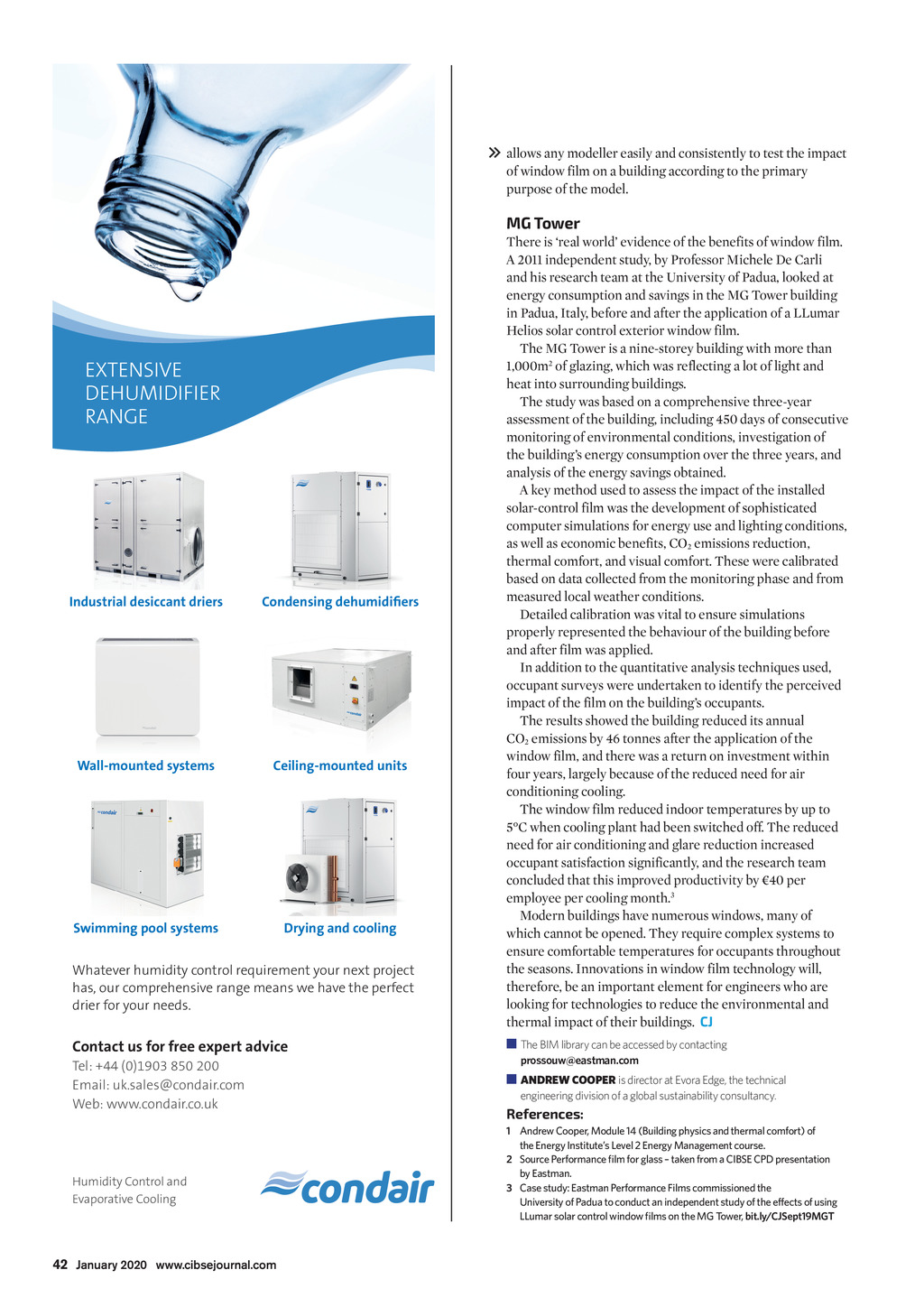




allows any modeller easily and consistently to test the impact of window film on a building according to the primary purpose of the model. MG Tower EXTENSIVE DEHUMIDIFIER RANGE Industrial desiccant driers Condensing dehumidifiers Wall-mounted systems Ceiling-mounted units Swimming pool systems Drying and cooling Whatever humidity control requirement your next project has, our comprehensive range means we have the perfect drier for your needs. There is real world evidence of the benefits of window film. A 2011 independent study, by Professor Michele De Carli and his research team at the University of Padua, looked at energy consumption and savings in the MG Tower building in Padua, Italy, before and after the application of a LLumar Helios solar control exterior window film. The MG Tower is a nine-storey building with more than 1,000m2 of glazing, which was reflecting a lot of light and heat into surrounding buildings. The study was based on a comprehensive three-year assessment of the building, including 450 days of consecutive monitoring of environmental conditions, investigation of the buildings energy consumption over the three years, and analysis of the energy savings obtained. A key method used to assess the impact of the installed solar-control film was the development of sophisticated computer simulations for energy use and lighting conditions, as well as economic benefits, CO2 emissions reduction, thermal comfort, and visual comfort. These were calibrated based on data collected from the monitoring phase and from measured local weather conditions. Detailed calibration was vital to ensure simulations properly represented the behaviour of the building before and after film was applied. In addition to the quantitative analysis techniques used, occupant surveys were undertaken to identify the perceived impact of the film on the buildings occupants. The results showed the building reduced its annual CO2 emissions by 46 tonnes after the application of the window film, and there was a return on investment within four years, largely because of the reduced need for air conditioning cooling. The window film reduced indoor temperatures by up to 5C when cooling plant had been switched off. The reduced need for air conditioning and glare reduction increased occupant satisfaction significantly, and the research team concluded that this improved productivity by 40 per employee per cooling month.3 Modern buildings have numerous windows, many of which cannot be opened. They require complex systems to ensure comfortable temperatures for occupants throughout the seasons. Innovations in window film technology will, therefore, be an important element for engineers who are looking for technologies to reduce the environmental and thermal impact of their buildings. CJ Contact us for free expert advice The BIM library can be accessed by contacting Tel: +44 (0)1903 850 200 Email: uk.sales@condair.com Web: www.condair.co.uk ANDREW COOPER is director at Evora Edge, the technical Humidity Control and Evaporative Cooling prossouw@eastman.com engineering division of a global sustainability consultancy. References: 1 Andrew Cooper, Module 14 (Building physics and thermal comfort) of the Energy Institutes Level 2 Energy Management course. 2 Source Performance film for glass taken from a CIBSE CPD presentation by Eastman. 3 Case study: Eastman Performance Films commissioned the University of Padua to conduct an independent study of the effects of using LLumar solar control window films on the MG Tower, bit.ly/CJSept19MGT 42 January 2020 www.cibsejournal.com CIBSE Jan20 pp40-42 Window film.indd 42 20/12/2019 15:29